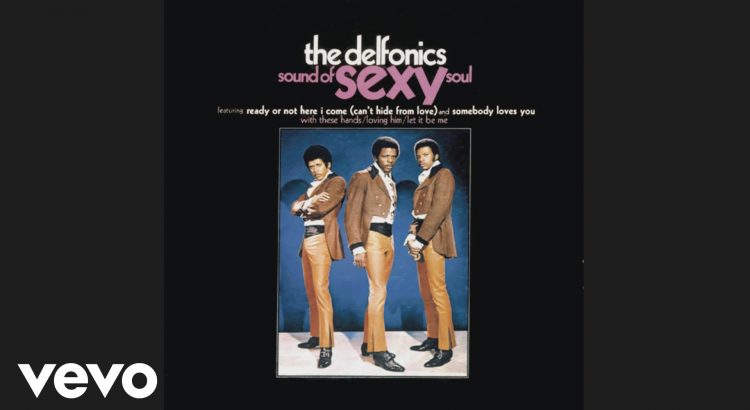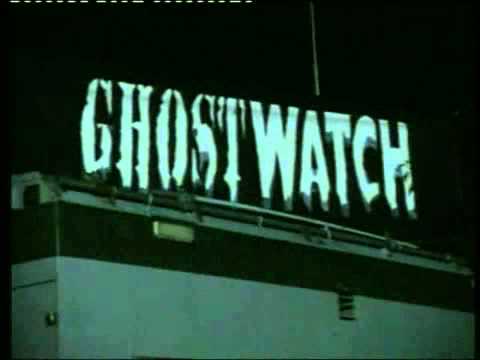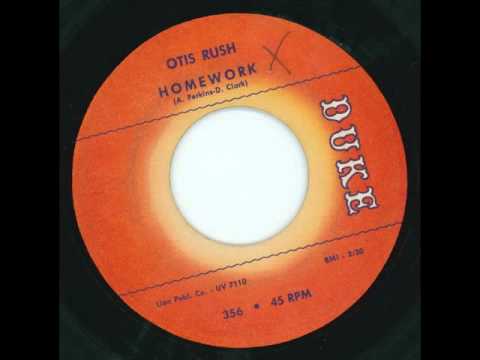METAL DAD: THE BOOK IS AVAILABLE NOW. COLLECTS YEARS 3 & 4! Click here.
METAL DAD shirts! Click here to get yours.


METAL DAD: THE BOOK IS AVAILABLE NOW. COLLECTS YEARS 3 & 4! Click here.
METAL DAD shirts! Click here to get yours.



I remember seeing the Delfonics on television around that time. Their stage presence was as unique and special as their sound. Into a world that was in love with the Motown way of performance, the powerful athletic movement embodied in the live appearance of the Temptations came this trio with slow angular moves that owed more to modern ballet than anything else. And there were no slick suits either. Instead, the Delfonics appeared in turtlenecks and bell bottoms. It was as if Philadelphia meant to announce, as if such an announcement was necessary, ‘hey, we ain’t Detroit.’
The Delfonics released two new singles in the wake of “La La.” Both of them did alright, “I’m Sorry” reaching #42 on the charts and “Break Your Promise” doing a little better at #35. Both songs had been written, just as “La La” had been, by producer Thom Bell along with William Hart, who sang lead on the hits. The original Delfonics trio also included Hart’s brother Wilbert and Randy Cain. That was the classic lineup.

Next up came a single that wasn’t a hit any bigger than the previous two singles but, clocking in at just over two minutes, it made a lasting impression. “Ready or Not Here I Come (Can’t Hide From Love)” was again written by Bell and Hart. It was released by Philly Groove Records on October 22, 1968 (the record just celebrated its 50th anniversary) and rose to #35 on the pop chart and #14 on the R&B chart.
The Jackson 5 covered “Ready or Not” on their 1970 Third Album. Perhaps the biggest moment of afterlife for the song came when the Fugees interpolated it for their huge 1996 album The Score. The following year, Missy Elliott sampled “Ready or Not” for her song “Sock It 2 Me.” “Ready or Not” has also been sampled by Three 6 Mafia and Lil’ Kim among others.
Despite releasing some great records after “Ready or Not” the Delfonics only had big chart success one more time, that with “Didn’t I Blow Your Mind” a Top 10 single in 1970. Randy Cain left the Delfonics the following year and was replaced by Major Harris. An even bigger set back came when Thom Bell, who had such an important role in the success of the Delfonics as producer and songwriter, moved on to work with the Stylistics and the Spinners.
The Delfonics split up in 1975 but there are groups touring with some variation of that name right up to today include William “Poogie” Hart & the Delfonics, and Wilbert Hart, formerly of the Delfonics. Randy Cain passed away in 2009.
METAL DAD: THE BOOK IS AVAILABLE NOW. COLLECTS YEARS 3 & 4! Click here.
METAL DAD shirts! Click here to get yours.




By 1978, Brian Eno had already changed the face of art rock with his production and collaboration on David Bowie’s Berlin Trilogy, as well as “invention” of ambient music. He next landed in post-punk New York City where he stumbled upon “No Wave” — the art, jazz, skronk scene exemplified by James Chance And The Contortions.
Fast forward 40 years to New York City in 2018 where The Contortions former lead guitarist and producer, Tomás Doncker, is producing and releasing albums on True Groove, the record label he founded in 2014. For years, Doncker had been decrying the lack of a ‘true music’ scene like the one he grew up in in the ’70s and early ’80s. The last New York scene had been the rock art world of The Strokes and the Yeah Yeah Yeahs in the 2000s.
Digging deep into the present day New York scene, Tomás, along with his partners Marla Mase and James Dellatacoma, started scouting out some of the city’s up and coming bands and were thrilled to discover that there was indeed a scene. Once they discovered this scene, they reached out to the artists they felt represented the True Groove “Global Soul” ethos and sound and offered to produce one song for each for a compilation album they were putting together. The result: a genre-busting collection of tracks that creates the scene all on its own. With an eye on that legendary scene, they called the new compilation NOW NY.
There are two constants on this sprawling, challenging, and extremely relevant group of tracks — New York City and True Groove. By showcasing artists as diverse as the ’60s jangle-inspired Diane and The Gentlemen, the voice of a generation rapper JSWISS, art rock protester Marla Mase, experimental pop stalwarts Woodhead, psychedelic jam band God Tiny, Jamaican “Reggae Rock” superstar Garrison Hawk, LGBTQ cult film director/auteur/performance artist and TROMA FILMS star Dylan Mars Greenberg, ’70s glam meets the Doors Lost Boy?, grunge pop prince Logan X, and a “Theatrical Rock & Roll Meets Future Pop” flame out from Janelle Monae’s lead guitarist/songwriting partner Kellindo Parker, True Groove has ably demonstrated that there is indeed a New York music scene and that it is alive and well.

The album also features two debut releases. One is from psychedelic garage rock pioneer and enigma Touchy Feely in their True Groove debut. The other is from urban icon actor/writer/director Khalil Kain who has just released his debut album on True Groove, Lambs to Slaughter. Kain’s acting career has spanned two decades and during that time he has become something of an urban icon. Perhaps his best-known work was in the seminal film Juice where he established the brand of swagger and bravado that he is now bringing to the new album.
Kain follows the family tradition established by his father Gylan Kain who was a member of the storied spoken word group The Last Poets. Kain’s take on the current state of the nation is nothing less than incendiary on Lambs To Slaughter and demands a response from the listener. The music from the album also serves as the score for Kain’s play of the same name. Like the NOW NY collection as a whole, Kain brings diverse sounds including hip-hop, classic soul, funk, spoken word, and old school rap to the proceedings.
If a contemporary music scene was missing in New York that problem has been solved by the release of NOW NY. The album serves to remind the world that New York is, was, and always will be a center of the music world. It’s also something of a dispatch that serves as something of a marker that establishes the city’s place in the music world, as the album’s title says, now.
NOW NY was produced and curated by Tomás Doncker and James Dellatacoma along with executive producer and curator Marla Mase for True Groove. It’s no coincidence that the album, which wears its of-the-moment relevance as a badge of honor, will be released on Election Day, November 9.
Popdose is proud to present the exclusive video premiere of Khalil Kain’s “Lil’ Duckie.”

Or at least, that’s the case for me. I admire many horror films for being well put together and for causing me to care about the characters and hope that they survive whatever ordeal their placed it. I was certainly tense watching the new Halloween movie as I wondered if Laurie Strode would survive. But to me, being “scared” is something different. It involves the complete destruction of the line between fantasy and reality.
For a while modern horror films tried to create such a separation with mixed results. The Paranormal Activity franchise tells its story through security cameras. Saw attempted to introduce a more realistic murderer with no supernatural background, setting him apart from Jason Voorhees and Freddy Krueger. The start of the entire movement can be traced back to The Blair Witch Project, a pseudo-documentary about a group of amateur filmmakers who find themselves trapped in woods that may or may not be haunted.
But there are two other horror films that took the concept even further. One was produced in the U.S., the other in the U.K. Not only does it provide examples of what each society finds scary, but it also provides a contrast of how far filmmakers were willing to go to present their fiction as reality.
To celebrate Halloween, I will be looking at both these films and examining the impact they had on their audience.
Ghostwatch (dir: Lesley Manning, 1992)
When I said that I would be examining a fake news story that was from the UK, I’m sure a few people immediately thought of the notorious Ghostwatch. This is the film that influenced all other subsequent found footage films since its broadcast.
For those not in the know, Ghostwatch has a good claim at being the most controversial TV movie ever released. It aired in the BBC’s drama slot on Halloween night in 1992 but was so convincing that many people came away believing that they had seen a haunting in a London suburb.
The set up to the film is simple. A slew of BBC television presenters, including Sarah Greene and Craig Charles, go to a flat that has been the site of poltergeist activity. The family – a single mom and her two daughters – are desperate to get people to believe their story. According to them, a poltergeist they’ve nicknamed “Pipes” has been wreaking havoc on their home. Dr. Lin Pascoe joins legendary English broadcaster Michael Parkinson to try to explain what’s happening. And from there, things go horribly wrong.
The opening was incredibly prescient for future entertainment. It plays routine now, like a scene from some ghost hunting show on SyFy. But at the time, no one had ever seen anything like a scene in which a TV presenter discusses the technology designed to specifically see ghosts.
The film looks like an actual news broadcast, with (fake) callers calling in to tell their own ghost stories. “We don’t want to give viewers any sleepless nights,” Michael Parkinson states to the camera in a convincing manner. At the start, it’s a very relaxed program that has the tone of a New Year’s Eve special. The presenters clearly just want a fun Halloween special and don’t take the idea of ghost activity seriously. No one wants Pipes to be revealed. And when he not only proves his existence to the world but takes over an important British symbol, the result is nothing short of terrifying.
It’s little wonder how this film was so traumatizing. What audiences saw were real people they admired and respected trying to figure out a growing mystery about the ghost activity that is increasing across the nation. And watching it today, I still felt convinced that I was watching a ghost slowly take over the BBC transmitters.
The influence can still be felt today. That clickbait article you’ve seen about the ghost cameos in Netflix’s The Haunting of Hill House? Ghostwatch did it first, inserting Pipes in random scenes throughout the program. (As of 2018, some of those cameos have still not been found.) As stated earlier, this movie predicted the rise ghost chasing TV. And using actual news anchors in fictitious settings is something that’s very commonplace in dramas now.
But Ghostwatch, for me, was a ghost story that I could be scared of because the film plays the idea straight. Everyone took the premise seriously, which is something most horror films don’t try. But that’s the key to being scared. If I can believe something is happening, I believe it can happen to me.
Special Bulletin (dir: Edward Zwick, 1983)
Special Bulletin is not a true horror film in the way Ghostwatch is but covers a lot of the same ground. It’s a fictional film presented as a news story in a way that is quite convincing and equally scary.
And the film was very influential. Coming out at the height of the Reagan administration, the film was a unique way to talk about nuclear paranoia. Director Edward Zwick and writer/producer Marshall Herskovitz became legendary among TV fans for creating thirtysomething and My So Called Life. Not to mention the fact that Zwick would break into Hollywood and direct The Last Samurai. This film feels like an important stepping stone in the path to examining an important writer/director team.
Of course, being an American production, the blow was still softened for the audience. Nominally, The Special Bulletin is presented as a real-life news broadcast about a group of domestic terrorists who threaten Charleston, S.C. with a nuclear bomb unless the U.S. surrenders its nuclear capabilities. The group gives a deadline and the media speculates on how the government will respond.
But the impact is lessened because the creators (or Standards and Practices) were not willing to commit fully to the premise. The film is constantly interrupted by messages saying that the film “is a realistic depiction of fictional events.” Beyond that, the film’s news broadcasters work at the fictional RBS network and are not recognizable figures in the same way Michael Parkinson is.
Again, horror has to feel real in order to be truly horrifying. By constantly reminding us that what we’re seeing isn’t happening has the same effect as showing us how they applied the makeup to Linda Blair to make her look possessed. All it does is remind me that I am not watching actual events.
Still, it begins well. We see a commercial for RBS and its programming before we abruptly cut into the story. And actors Ed Flanders and Kathryn Walker at least look the part. I could imagine them reading the nightly news about a local barbecue festival or about an in depth piece of a controversy in the U.S. treasury. And the format works for the story. It keeps the audience questioning what will happen next and keeps up the mystery of who, exactly, these terrorists are. One of the anchors is kidnapped by the terrorists and the news camera becomes the primary way that the terrorists communicate with the world. It’s only become more authentic as time went on and terrorism became the primary focus of the news. Like Ghostwatch, the anchors are initially skeptical of the claims that the terrorist group has a nuclear weapon. And also like Ghostwatch, the professional news anchors allow their emotions to show as the situation becomes worse.
But while I understand the decision to include those teasers revealing the fictional nature of the program, they still utterly ruin the effect. And I can tell they were added after the fact. Zwick and Herskovitz tried their best to create as authentic a film as possible. But it was ruined by the constraints of American TV. Now, Ghostwatch was a significantly controversial film for seemingly refusing to acknowledge that it was a work of fiction. But that’s what made it effective. By taking shortcuts, Special Bulletin’s impact was ruined.
I once examined nuclear holocaust films from the 1980s and beyond to see how different artists in different countries reacted to the Cold War seemingly heating up. What I found was that America, even though the people in it were horrified at the prospect, were still not able to address the reality of the situation. Special Bulletin has the same problem, especially when compared to Ghostwatch. The network constantly reminded people that what they were seeing was a drama, which ruined the illusion. While the UK is willing to commit to an idea, the U.S. wants to make sure that no one is offended. It ruins the artistic effort, but that’s not the fault of the creators. They had an idea about how destructive a terrorist attack could be in a very prescient way. It was still effective, but it was also easy to see how Special Bulletin could have been transformed into a masterpiece.
METAL DAD: THE BOOK IS AVAILABLE NOW. COLLECTS YEARS 3 & 4! Click here.
METAL DAD shirts! Click here to get yours.


 METAL DAD: THE BOOK IS AVAILABLE NOW. COLLECTS YEARS 3 & 4! Click here.
METAL DAD: THE BOOK IS AVAILABLE NOW. COLLECTS YEARS 3 & 4! Click here.
METAL DAD shirts! Click here to get yours.


METAL DAD: THE BOOK IS AVAILABLE NOW. COLLECTS YEARS 3 & 4! Click here.
METAL DAD shirts! Click here to get yours.


Radio City With Jon Grayson & Rob Ross: Episode Eighty Six
Rob and Jon’s first show after a week off and there’s no lack of conversational material to catch up on! From the moment the boys get together, they’re tearing it up, talking about the Saudi Arabia situation; New York City’s hapless new schools chancellor; the legalization of marijuana in Canada; Carroll Spinney signs off from “Sesame Street” after 49 years; all the major sports; Rob’s appreciation for the reissue of the long-lost Longbranch/Pennywhistle album, Part One of a special two-part “In Our Heads” and a ton more!
Take comfort in knowing Jon and Rob are doing their thing – and they’re doing it for you. Because you know you just can’t live without your weekly dose of Radio City…!
Radio City With Jon Grayson & Rob Ross: Episode Eighty Six
The podcast will be on the site as well as for subscription via iTunes and other podcast aggregators. Subscribe and let people know about Radio City, as well as Popdose’s other great podcasts David Medsker’s Dizzy Heights and In:Sound with Michael Parr and Zack Stiegler.

In the mid-’80s, while I was trying to make money in the music business, I still had a job in the corporate world which allowed me to make actual money. It was a pretty straight job with a major financial institution but it did have its perks. The best perk was that I got to travel to Chicago three or four times a year. Not only did I have friends living in the Windy City at the time, but the town was also still a hotbed for the style of electric blues that bore its name. Among the artists I got to see, all in small clubs, were legends like Junior Wells, Son Seals, Jimmy Johnson, and of course Otis Rush.
It was at a club called Blue Chicago at that time located on State Street on the near North Side. The club’s proximity to the downtown area made it a haven for tourists. I’m generally not fond of those kinds of places but when I learned that Otis Rush was playing there while I was in town I put that aside. I don’t remember that much about his set beyond the feeling that he was everything I hoped he would be and that was a high bar to surpass indeed.
Rush came up to Chicago from the South like many of the other artists who created the Chicago blues sound. He was born in Mississippi in 1935 and moved to the city with his family when he was 14. He made some important recordings for Cobra Records in the 1950s including the #8 R&B hit “I Can’t Quit You Baby” which was released in 1956. Other notable songs from that period included “All Your Love (I Miss Loving),” and “Double Trouble.”

When Cobra went belly up, Rush landed at Chess Records. He recorded eight sides for the label before moving on to Duke Records. His output at Duke was even lower. There was just one single for the label but that one single was “Homework.” The song was written by Rush along with Al Perkins and Dave Clark. It wasn’t a hit for Rush but it was a song that would gain new life when it was covered by the J. Geils Band on their debut album in 1970.
Rush continued recording through the 1960s on labels like Vanguard and Cotillion. His Cotillion album Mourning in the Morning was produced by the storied guitar player Mike Bloomfield along with Nick Gravenites. Both producers were members of the Electric Flag at the time. The album was recorded at FAME Studios in Muscle Shoals and appropriate to that setting the sound of the album found Rush moving in the direction of rock and soul.
In 1971, Rush recorded his classic album Right Place, Wrong Time for Capitol. For some reason, Capitol refused to release it. Five years later, Rush bought his master back from the label and had the album issued in Japan. Eventually, it was released by Bullfrog Records in the U.S. There were more recordings for labels like Sonet and Delmark in the 1970s.
Then there was a gap of 16 years between Rush albums. The drought ended when he released Ain’t Enough Comin’ In in 1994. The album won Rush his first Grammy Award. He continued to tour into the new century until a stroke brought his touring days to a halt in 2003. Although he was unable to play, Rush made an appearance at the Chicago Blues Festival in 2016 where the city’s mayor proclaimed it Otis Rush Day.
Otis Rush passed away on September 29, 2018. He had been inducted into the Blues Hall of Fame in 1984 and received a Lifetime Achievement Award from Jazz Foundation of America earlier this year.
Billy Hector has a fine new album called Some Day Baby. You can find it at iTunes and the usual online retailers or better yet if you’re in the area go to one of Billy’s gigs and pick it up there.